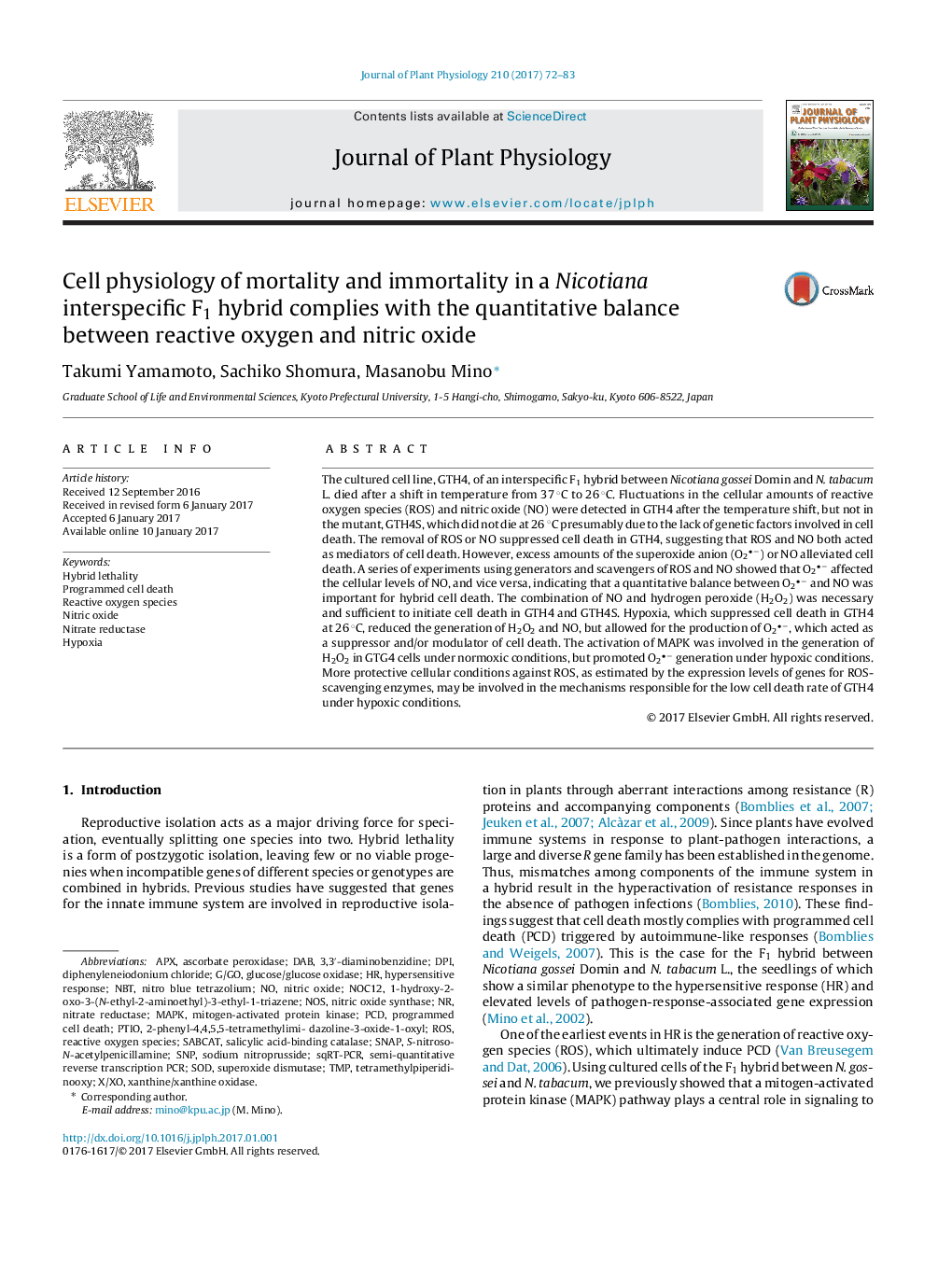| کد مقاله | کد نشریه | سال انتشار | مقاله انگلیسی | نسخه تمام متن |
|---|---|---|---|---|
| 5518048 | 1543868 | 2017 | 12 صفحه PDF | دانلود رایگان |

The cultured cell line, GTH4, of an interspecific F1 hybrid between Nicotiana gossei Domin and N. tabacum L. died after a shift in temperature from 37 °C to 26 °C. Fluctuations in the cellular amounts of reactive oxygen species (ROS) and nitric oxide (NO) were detected in GTH4 after the temperature shift, but not in the mutant, GTH4S, which did not die at 26 °C presumably due to the lack of genetic factors involved in cell death. The removal of ROS or NO suppressed cell death in GTH4, suggesting that ROS and NO both acted as mediators of cell death. However, excess amounts of the superoxide anion (O2â) or NO alleviated cell death. A series of experiments using generators and scavengers of ROS and NO showed that O2â affected the cellular levels of NO, and vice versa, indicating that a quantitative balance between O2â and NO was important for hybrid cell death. The combination of NO and hydrogen peroxide (H2O2) was necessary and sufficient to initiate cell death in GTH4 and GTH4S. Hypoxia, which suppressed cell death in GTH4 at 26 °C, reduced the generation of H2O2 and NO, but allowed for the production of O2â, which acted as a suppressor and/or modulator of cell death. The activation of MAPK was involved in the generation of H2O2 in GTG4 cells under normoxic conditions, but promoted O2â generation under hypoxic conditions. More protective cellular conditions against ROS, as estimated by the expression levels of genes for ROS-scavenging enzymes, may be involved in the mechanisms responsible for the low cell death rate of GTH4 under hypoxic conditions.
Journal: Journal of Plant Physiology - Volume 210, March 2017, Pages 72-83